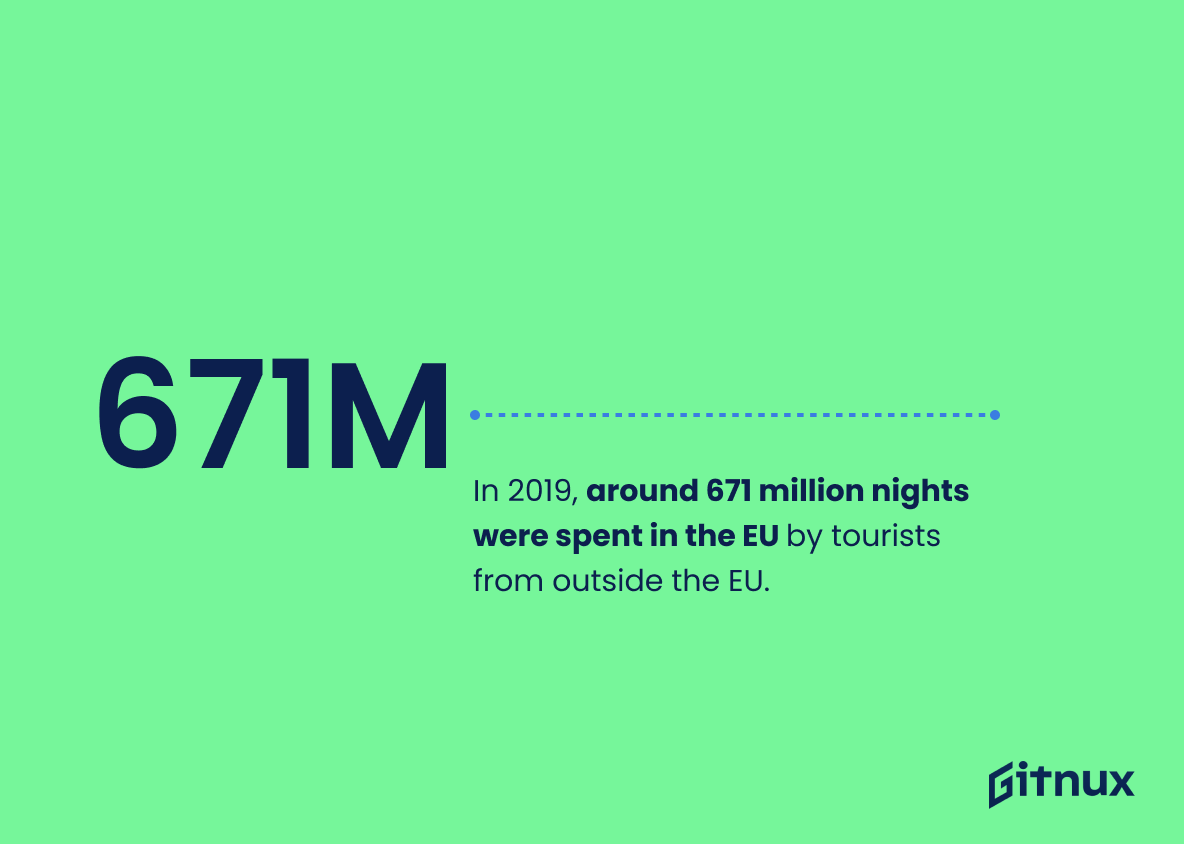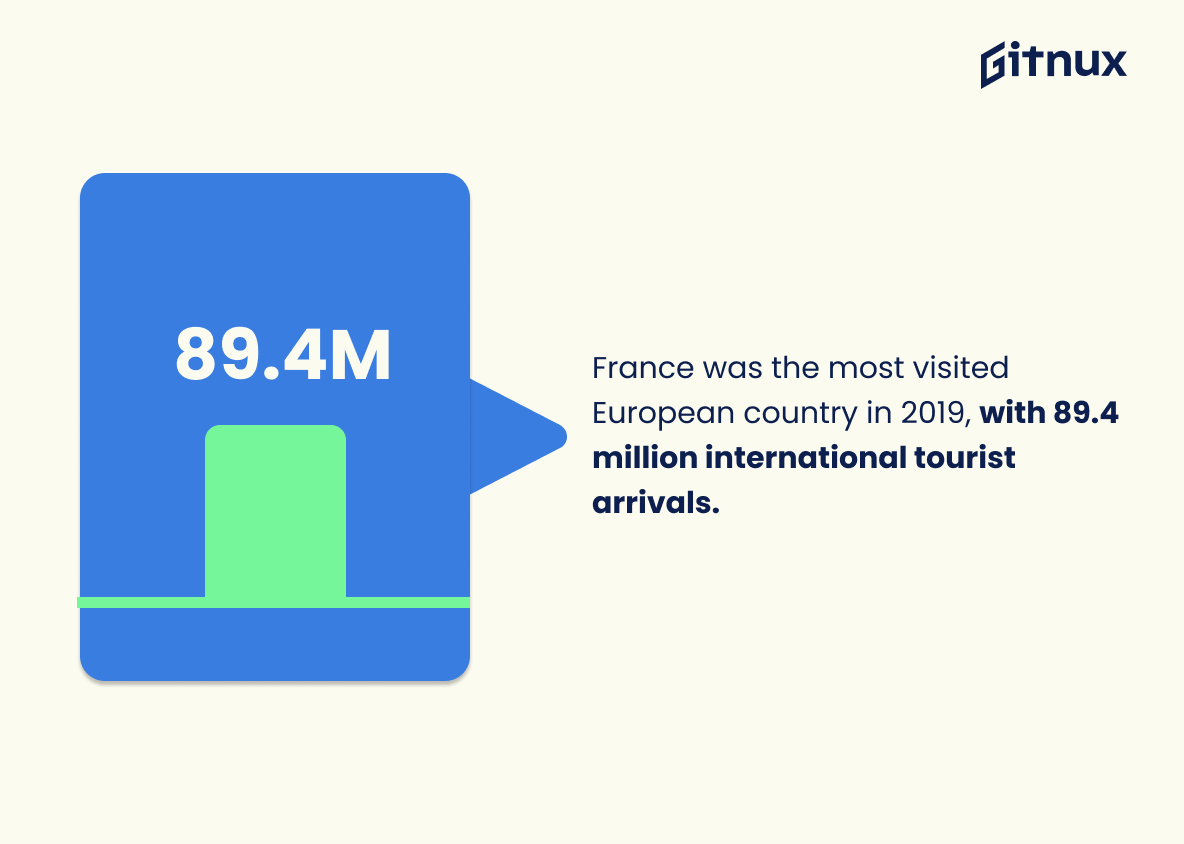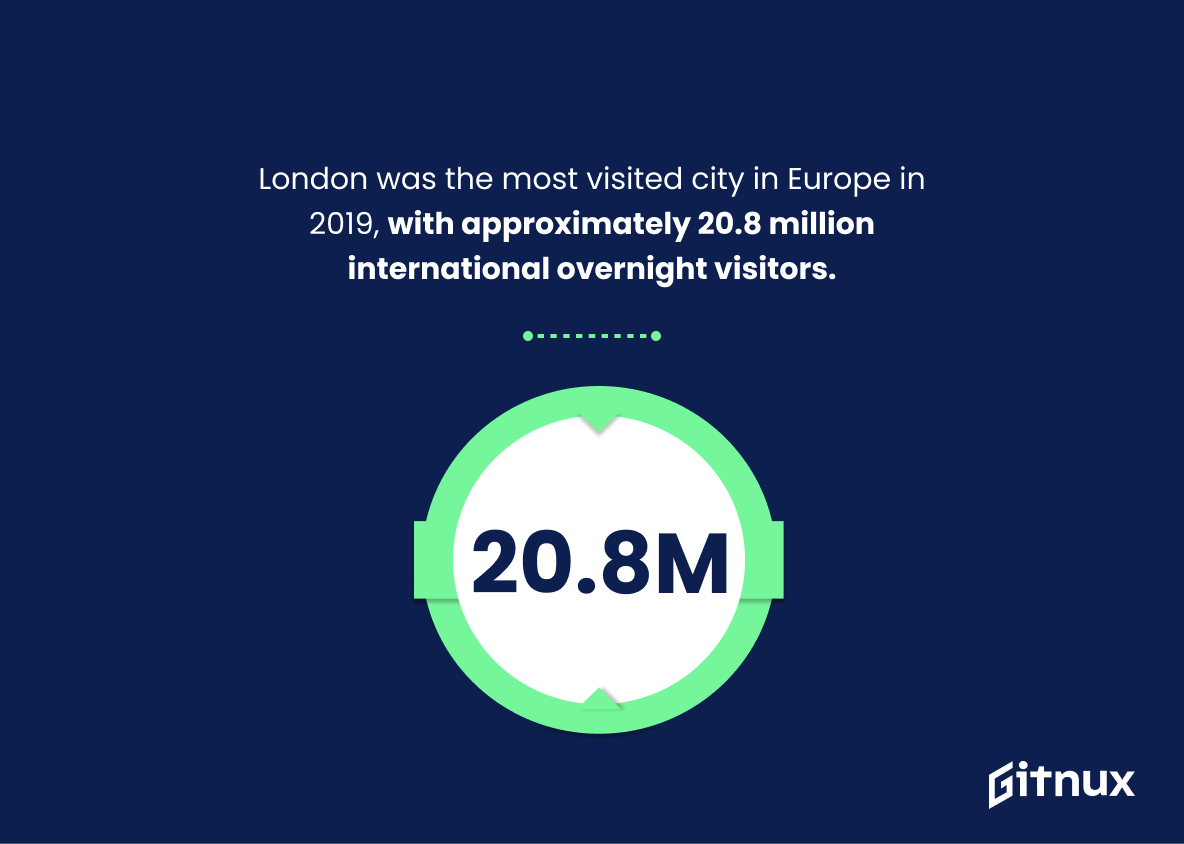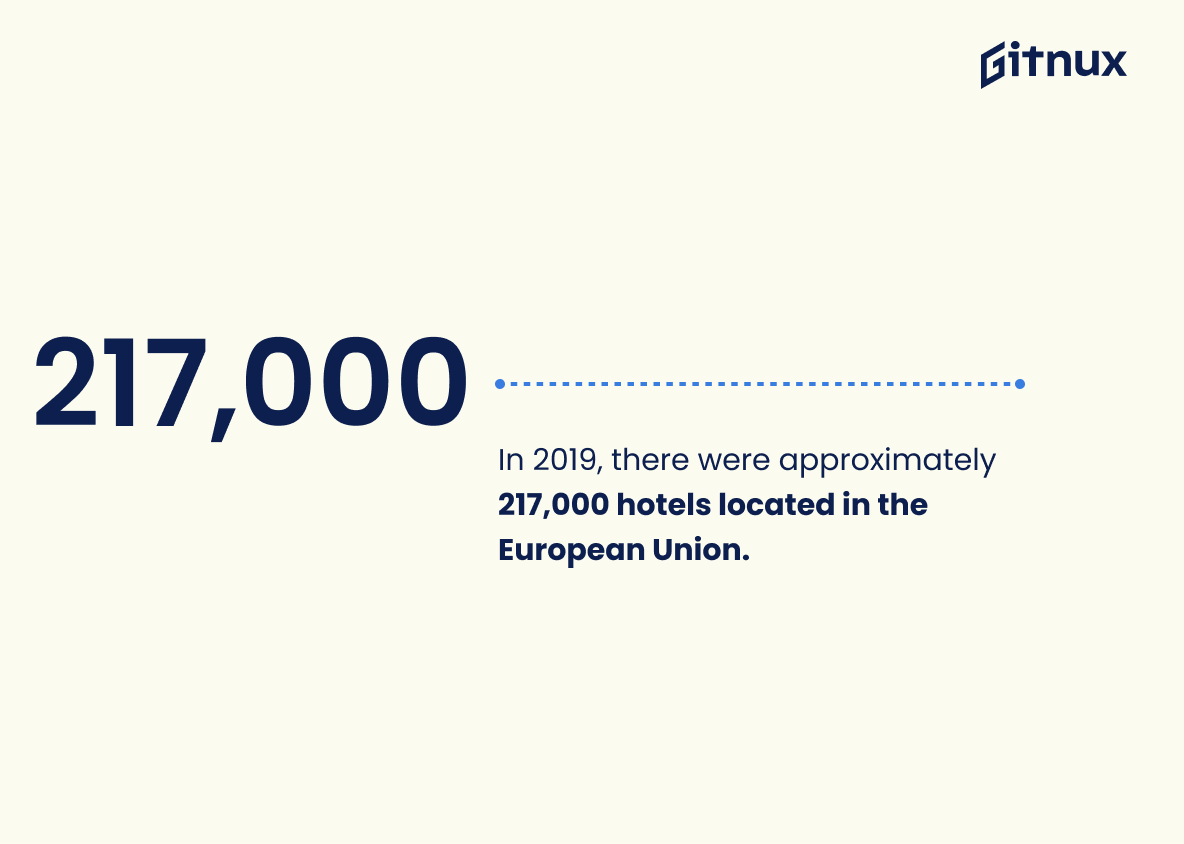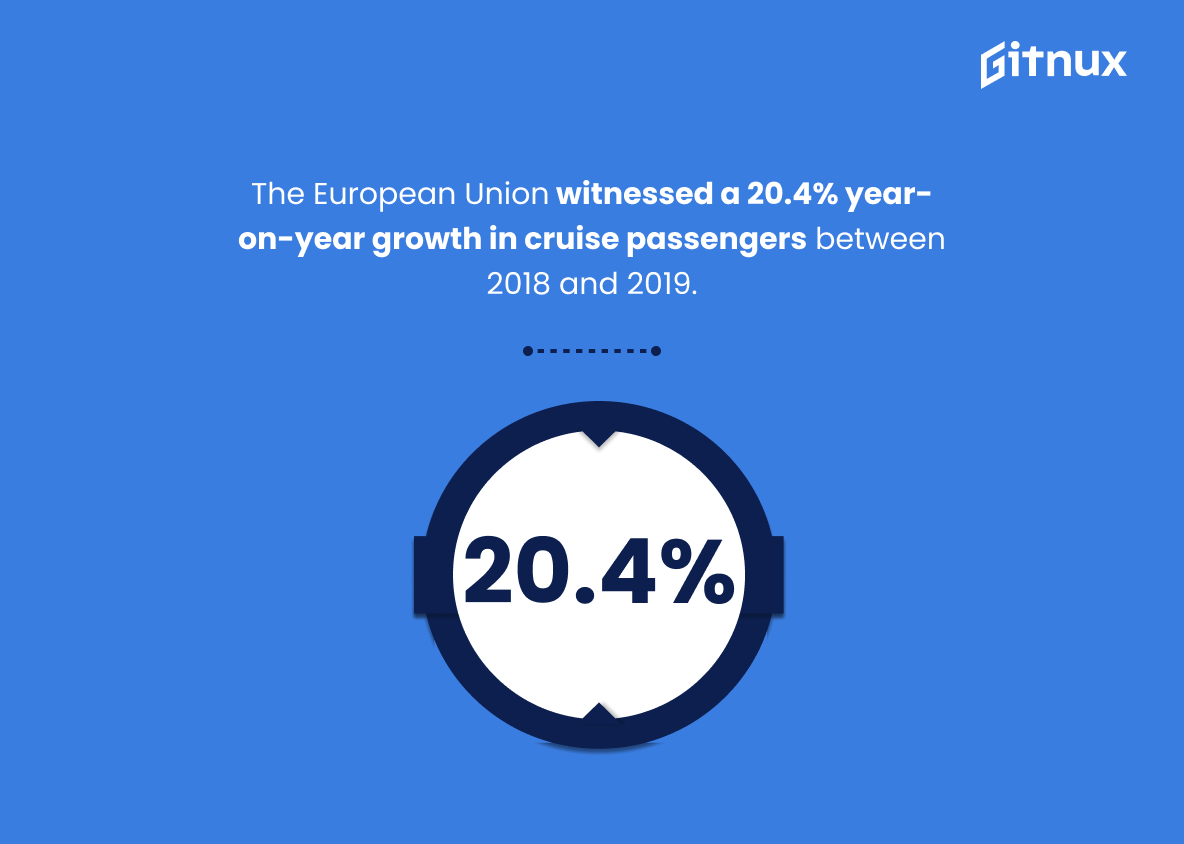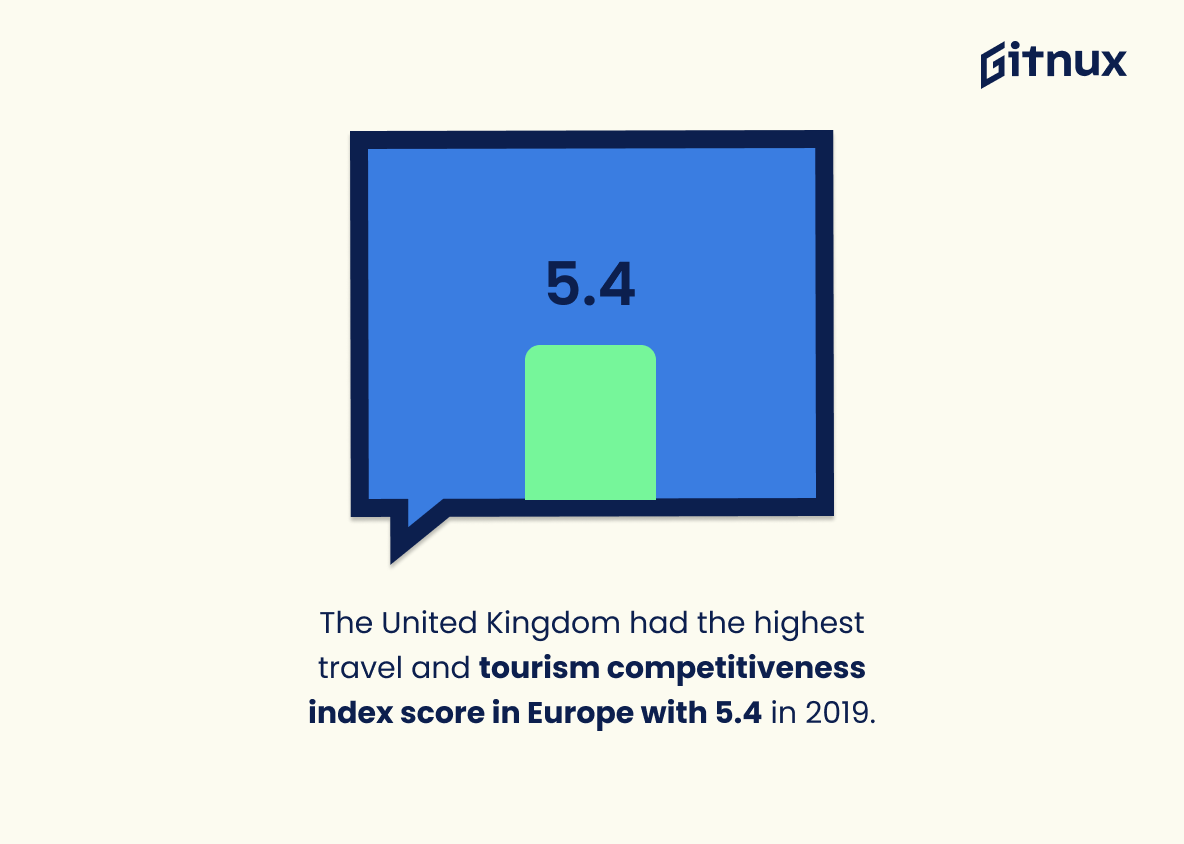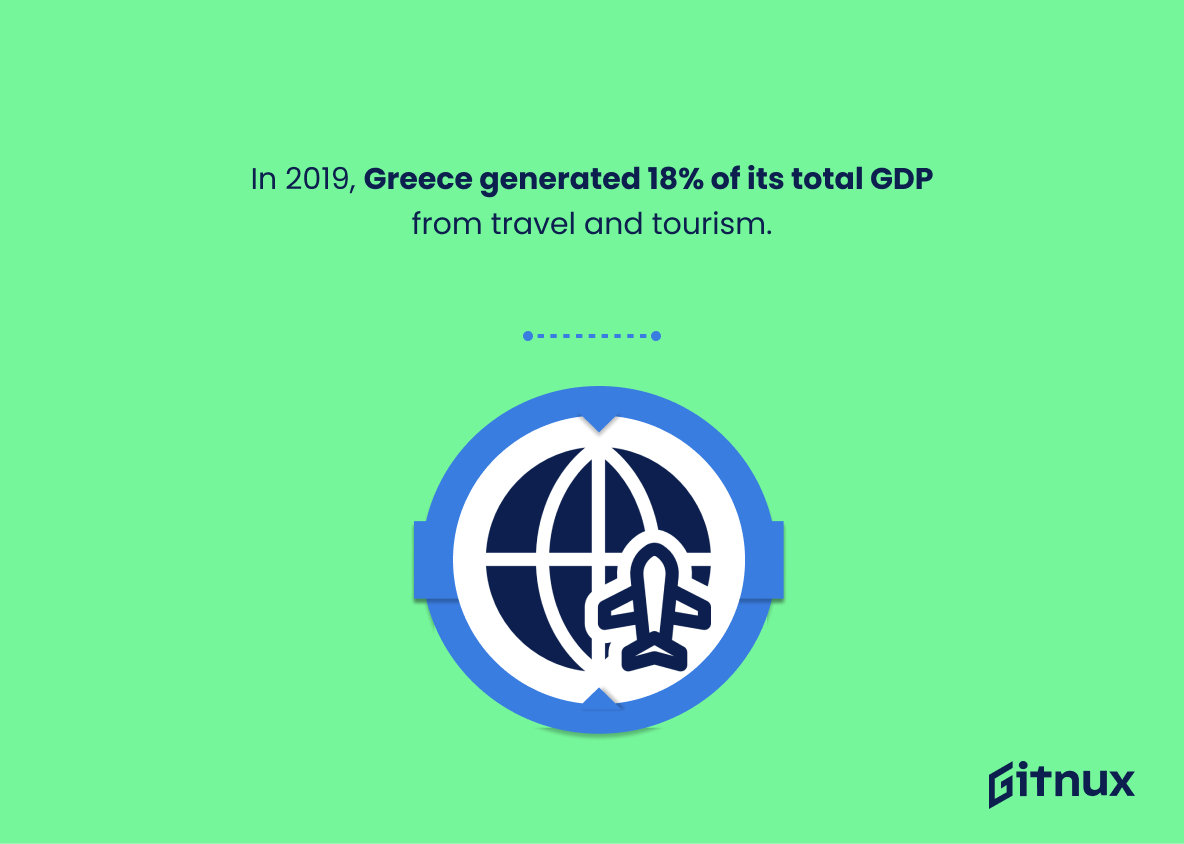Europe is a popular destination for international tourists, and the tourism industry has been an important contributor to its economy. In 2019, Europe welcomed 744 million international tourist arrivals – accounting for 50% of the world’s total – with France being the most visited country in Europe at 89.4 million visitors and London as the most visited city with 20.8 million overnight visitors from outside of EU countries. The European Union’s travel and tourism GDP was estimated at €782 billion that same year, providing 27 million jobs across all member states while contributing 9.5% to their overall GDP combined.
Inbound tourism expenditure in Germany alone amounted to around €38.6 billion in 2019; Portugal had approximately 726 thousand beds available within tourist accommodations; Italy saw 134.9 stays booked throughout that year; 671 nights were spent by non-EU citizens visiting various destinations within EU borders; 110 Chinese tourists traveled through Europe during this time period; 217 thousand hotels existed across all 28 members of EU then too – not including Airbnb listings which have grown exponentially since 2010 reaching 5+million last year. Lastly, cruise passengers increased by 20%, making it one of many sectors experiencing growth despite global economic downturns due to COVID-19 pandemic today..
Tourism In Europe Statistics Overview
The tourism sector provides 27 million jobs across the European Union.
This statistic is a powerful reminder of the immense impact that the tourism sector has on the European Union. It highlights the sheer number of jobs that are created and sustained by the industry, demonstrating its importance to the economy and the livelihoods of millions of people.
The European Union’s travel and tourism GDP was estimated at €782 billion in 2019.
This statistic is a testament to the immense economic impact of travel and tourism in Europe. It highlights the importance of the industry to the European Union, and the potential for further growth in the sector. It also serves as a reminder of the importance of investing in tourism infrastructure and services to ensure that the industry continues to thrive.
In 2019, around 671 million nights were spent in the EU by tourists from outside the EU.
This statistic is a testament to the immense popularity of Europe as a tourist destination. It shows that millions of people from outside the EU are drawn to the continent’s many attractions, from its stunning natural beauty to its vibrant culture and history. This statistic is a reminder of the importance of tourism to the European economy, and the need to ensure that the industry remains a viable and sustainable source of income for the region.
France was the most visited European country in 2019, with 89.4 million international tourist arrivals.
This statistic is a testament to the immense popularity of France as a tourist destination in Europe. It highlights the fact that France is a top choice for travelers looking to explore the continent, and serves as a reminder of the country’s immense cultural and historical significance. Furthermore, it provides a valuable insight into the overall tourism industry in Europe, and can be used to inform future decisions about the region’s tourism strategies.
London was the most visited city in Europe in 2019, with approximately 20.8 million international overnight visitors.
This statistic is a testament to London’s popularity as a tourist destination in Europe. It highlights the city’s immense appeal to international visitors, with over 20 million people choosing to spend their nights in London in 2019. This is a remarkable figure that speaks to the city’s ability to draw in tourists from all over the world. It is a key indicator of the success of the tourism industry in Europe, and a reminder of the importance of the sector to the continent’s economy.
In 2019, approximately 110 million Chinese tourists visited Europe.
This statistic is a testament to the immense popularity of Europe as a tourist destination. It shows that despite the long distances and the cost of travel, millions of Chinese tourists still chose to visit Europe in 2019. This is a clear indication of the allure of Europe as a tourist destination and the potential for further growth in the European tourism industry.
In 2019, approximately 134.9 million stays were booked within Italy.
This statistic is a testament to the popularity of Italy as a tourist destination. It shows that millions of people are choosing to visit the country each year, making it one of the most sought-after tourist destinations in Europe. This statistic is an important indicator of the success of Italy’s tourism industry and provides valuable insight into the trends and preferences of travelers.
In 2019, there were approximately 217,000 hotels located in the European Union.
This statistic is a telling indication of the immense potential for tourism in the European Union. With over two hundred thousand hotels, travelers have a wealth of options when it comes to finding a place to stay during their visit. This number also speaks to the popularity of the region as a tourist destination, as it suggests that the demand for accommodations is high enough to support such a large number of hotels.
Europe welcomed 51 million international tourists via air travel from the United States in 2019.
This statistic is a testament to the immense popularity of Europe as a tourist destination for Americans. It highlights the fact that Europe is a top choice for US travelers, with millions of people choosing to explore its many attractions each year. This is an important statistic to consider when discussing the impact of tourism in Europe, as it demonstrates the significant economic benefits that the continent receives from US visitors.
The European Union witnessed a 20.4% year-on-year growth in cruise passengers between 2018 and 2019.
This statistic is a testament to the booming tourism industry in Europe. It shows that more and more people are choosing to take a cruise in the European Union, indicating that the region is becoming an increasingly popular destination for travelers. This is great news for the European economy, as it means more money is being injected into the local economy through tourism. Furthermore, it is a sign that the region is becoming more attractive to tourists, which could lead to further growth in the future.
In 2019, approximately 726,000 beds were available in tourist accommodations in Portugal.
This statistic is a testament to the sheer magnitude of Portugal’s tourism industry. It shows that the country is well-equipped to accommodate the influx of tourists, making it an attractive destination for travelers. Furthermore, it indicates that Portugal is a popular tourist destination, as the number of beds available is indicative of the number of people visiting the country. This statistic is a key indicator of the success of Portugal’s tourism industry and its potential for further growth.
The United Kingdom had the highest travel and tourism competitiveness index score in Europe with 5.4 in 2019.
This statistic is a testament to the United Kingdom’s success in the tourism industry, highlighting its impressive performance in comparison to other European countries. It is a clear indication that the UK is a desirable destination for travelers, and that its tourism industry is thriving. This is an important point to consider when discussing Tourism In Europe Statistics, as it demonstrates the potential for other countries to emulate the UK’s success.
In 2019, over 4 million people were employed in the accommodation and food service activities sector in the United Kingdom.
This statistic is a testament to the importance of the accommodation and food service activities sector in the United Kingdom’s tourism industry. It highlights the sheer number of people employed in this sector, demonstrating the significant contribution it makes to the economy. This is especially pertinent in the context of a blog post about Tourism in Europe Statistics, as it provides a valuable insight into the scale of the industry in the UK.
Airbnb listings in Europe have grown to over 5.5 million from 2010 to 2019.
This statistic is a testament to the immense growth of Airbnb in Europe over the past decade. It highlights the increasing popularity of Airbnb as a viable accommodation option for tourists visiting Europe, and the impact it has had on the tourism industry. This growth in Airbnb listings has likely had a positive effect on the tourism industry, as it has provided more affordable and convenient accommodation options for travelers. Furthermore, this statistic is indicative of the increasing popularity of Europe as a tourist destination, as more and more people are choosing to stay in Airbnb listings when visiting the continent.
In 2019, Greece generated 18% of its total GDP from travel and tourism.
This statistic is a testament to the importance of travel and tourism to Greece’s economy. It highlights the significance of the industry to the country’s overall GDP, demonstrating the potential for further growth and development in the sector. This is especially pertinent in the context of a blog post about Tourism in Europe Statistics, as it provides a valuable insight into the economic impact of the industry in one of the continent’s most popular tourist destinations.
In 2019, the European Union had approximately 248 million nights spent in short-stay accommodation by residents.
This statistic is a testament to the immense popularity of Europe as a tourist destination. It shows that millions of people from within the European Union are taking advantage of the continent’s many attractions and spending time in short-stay accommodation. This is indicative of the vibrant tourism industry in Europe and the many opportunities it provides for travelers.
In 2019, inbound tourism expenditure in Germany amounted to around €38.6 billion.
This statistic is a testament to the immense popularity of Germany as a tourist destination. It highlights the fact that the country has become a major hub for inbound tourism, with travelers from all over the world flocking to its cities and attractions. This statistic is also indicative of the economic benefits that tourism brings to Germany, with the €38.6 billion in expenditure providing a significant boost to the country’s economy. As such, this statistic is an important part of understanding the overall picture of tourism in Europe.
Conclusion
The statistics presented in this blog post demonstrate the immense impact of tourism on Europe. In 2019, Europe welcomed 744 million international tourist arrivals and accounted for 50% of the world’s total. The sector provided 27 million jobs across the European Union and generated €782 billion in GDP. France was the most visited country with 89.4 million visitors while London was its most popular city with 20.8 million overnight stays from tourists outside EU countries alone; 110 million Chinese tourists also visited that year, contributing to 9.5% of total GDP in Europe as a whole – an impressive figure considering there were 217,000 hotels located within it at that time.
Additionally, 51million US citizens travelled to Europe via air travel while 134.9m stayed booked rooms within Italy itself; 671m nights were spent by non-EU residents throughout all member states combined and 4m people employed in accommodation/food services activities just within UK borders – not forgetting 5+ m Airbnb listings available too. Finally, Greece had 18% of their entire GDP come from tourism related sources whilst Germany saw 38bn euros worth expenditure coming into their economy due to incoming travellers during 2019 – making it clear why such attention is being paid towards this industry today despite current global circumstances surrounding COVID-19 pandemic restrictions still present worldwide
References
0. – https://www.etias.com
1. – https://www.unwto.org
2. – https://www.statista.com
3. – https://www.ipropertymanagement.com
4. – https://www.businessinsider.com
5. – https://www.ons.gov.uk
6. – https://www.ec.europa.eu
7. – https://www.tcdata360.worldbank.org


